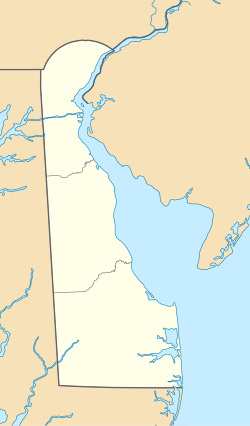J. W. Cox Dry Goods Store | |
 Site of the store | |
| Location | 214 High St., Seaford, Delaware |
|---|---|
| Coordinates | 38°38′27″N75°36′44″W / 38.64083°N 75.61222°W |
| Area | 0.3 acres (0.12 ha) |
| Built | 1885 |
| MPS | Seaford Commercial Buildings TR |
| NRHP reference No. | 86002982 [1] |
| Added to NRHP | February 18, 1987 |
The J. W. Cox Dry Goods Store was a historic commercial building located at Seaford, Sussex County, Delaware. It was built about 1885, and was a two-story, four-bay, frame structure with a front gable roof. It had commercial space in the front and living space in the rear. It featured its original showcase windows and doors. [2]
It was added to the National Register of Historic Places in 1987. [1]



